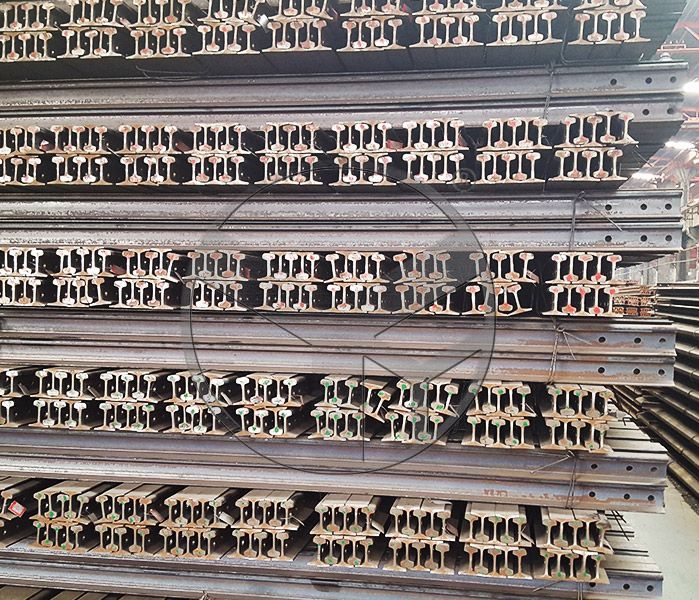I-shaped Section Used For Heavy Rail Section
Heavy rail I-beams, also called steel beams, are long steel bars with I-shaped cross sections. The specifications of I-beam can be expressed by the model. The model represents the number of centimeters of waist height. The I-beam with the same waist height has several different leg widths and waist thicknesses. It is necessary to add abc to the right of the model to distinguish. Steel and light I-beam, high-quality profiles are profiles made of high-quality steel. It is divided into hot-rolled (forged) high-quality profiles, cold-drawn (drawn) high-quality profiles and other varieties. Hot rolled (forged) high-quality profiles include carbon structural steel, carbon tool steel, alloy structural steel, spring steel, stainless steel, bearing steel, alloy tool steel, die steel, high-speed tool steel and other varieties. Cold-drawn (dial) high-quality profiles include carbon structural steel, carbon tool steel, alloy structural steel, spring steel, stainless steel, bearing steel, alloy tool steel, high-speed tool steel, free-cutting steel, and cold heading steel.
The cross-sectional shape of the rail adopts an I-shaped cross-section with the best bending resistance performance, which is composed of a rail head, a rail waist and a rail bottom. In order to make the rail better withstand the forces from various aspects and ensure the necessary strength conditions, the rail should have sufficient height, its head and bottom should have sufficient area and height, and the waist and bottom should not be too thin. Among the above-mentioned various types of rails, 60kg and 50kg rails are laid on the main trunk line, and station lines and special lines are generally laid with 43kg Heavy Rail. Rail fracture refers to one of the following situations: the rail's full section is broken into at least two parts; the crack has penetrated the entire rail head section or rail bottom section; there are falling blocks on the top surface of the rail that are longer than 50mm and deeper than 10mm.
43kg Heavy Rail
The end surface of heavy rails must not have traces of shrinkage holes and interlayers. The cross-sectional shape of heavy rails adopts an I-shaped cross-section with the best bending resistance. The cross-section is composed of the rail head, rail waist and rail bottom. All aspects of force to ensure the necessary strength conditions, the rail should have sufficient height, its head and bottom should have sufficient area and height, waist and bottom should not be too thin. For heavy-load railways and railways in particularly busy sections, 75kg steel rails are laid. Currently, short special cross-section rails are used, which are referred to as AT rails. In order to meet the needs of turnouts, bridges, and seamless lines, China’s railways also use Special section (asymmetric I-shaped rails with the central axis) rails. The rolled rail shall be straight without significant bending and twisting. The local bending and torsion of light and heavy rails, the amount of corrective deformation, and the inclination of the end faces of the rails must not exceed the standards. The surface of the rail shall be clean and smooth, and there shall be no defects such as cracks, scars, scratches and so on; As for the defects allowed on the overall surface of the light and heavy rail and the degree of their geometric quantities, they shall not exceed the standard requirements.
Steel Track is the main component of the railway track. Its function is to guide the wheels of rolling stock, to withstand the huge pressure of the wheels, and to transfer to the sleepers. There are two ways to connect the joints, they are butt and misconnection, and the two kinds of joints have their advantages. The docking track can be laid mechanically, and the mismatch can only be laid one by one on the line. In the case of docking, the impact effect is balanced and it is easy to maintain the level, while in the case of misconnection, the impact is unbalanced from time to time and it is difficult to maintain the level. When the train passes through the joint, the impact of the two steel rails occurs simultaneously, so the number of impacts is half less than the misconnection.
The above is the introduction of the cross section shape of heavy rail introduced by Steel Crane Rail Manufacturers.

评论
发表评论